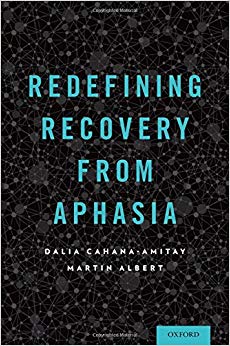
By Dalia Cahana-Amitay, Martin Albert
Hardcover: 296 pages
Publisher: Oxford University Press; 1 edition (February 4, 2015)
Language: English
ISBN-10: 0199811938
ISBN-13: 978-0199811939
This book focuses on two fundamental aspects of brain-language relations: one concerns the neural organization of language in the healthy brain; the other challenges current approaches to treatment of aphasia and offers a new theory for recovery from aphasia. The essence of the book lies in the phrase neural multifunctionality: the constant and dynamic incorporation of non-linguistic functions into language models of the intact brain. The book makes the claim that language is a construction, created as we use it, and cannot be understood as being supported by neurally based linguistic networks only. Rather, language emerges from the constant and dynamic interaction among neural networks subserving cognitive, affective, and praxic functions with neural networks subserving lexical retrieval (naming), sentence processing (comprehension), and discourse (communication, conversation). In persons with stroke-induced aphasia, neural networks for executive system function, attention, memory, motor system function, visual system function, and emotion interact with neural networks for language to produce the aphasia profile and to influence recovery from aphasia. Consequently, neural multifunctionality in aphasia explains individual differences in the lesion-deficit model and continued recovery over time, redefining the concept of recovery from aphasia and offering new opportunities for treatment.
Premium Content
Login to buy access to this content.What's Your Reaction?
Excited
0
Happy
0
In Love
0
Not Sure
0
Silly
0

